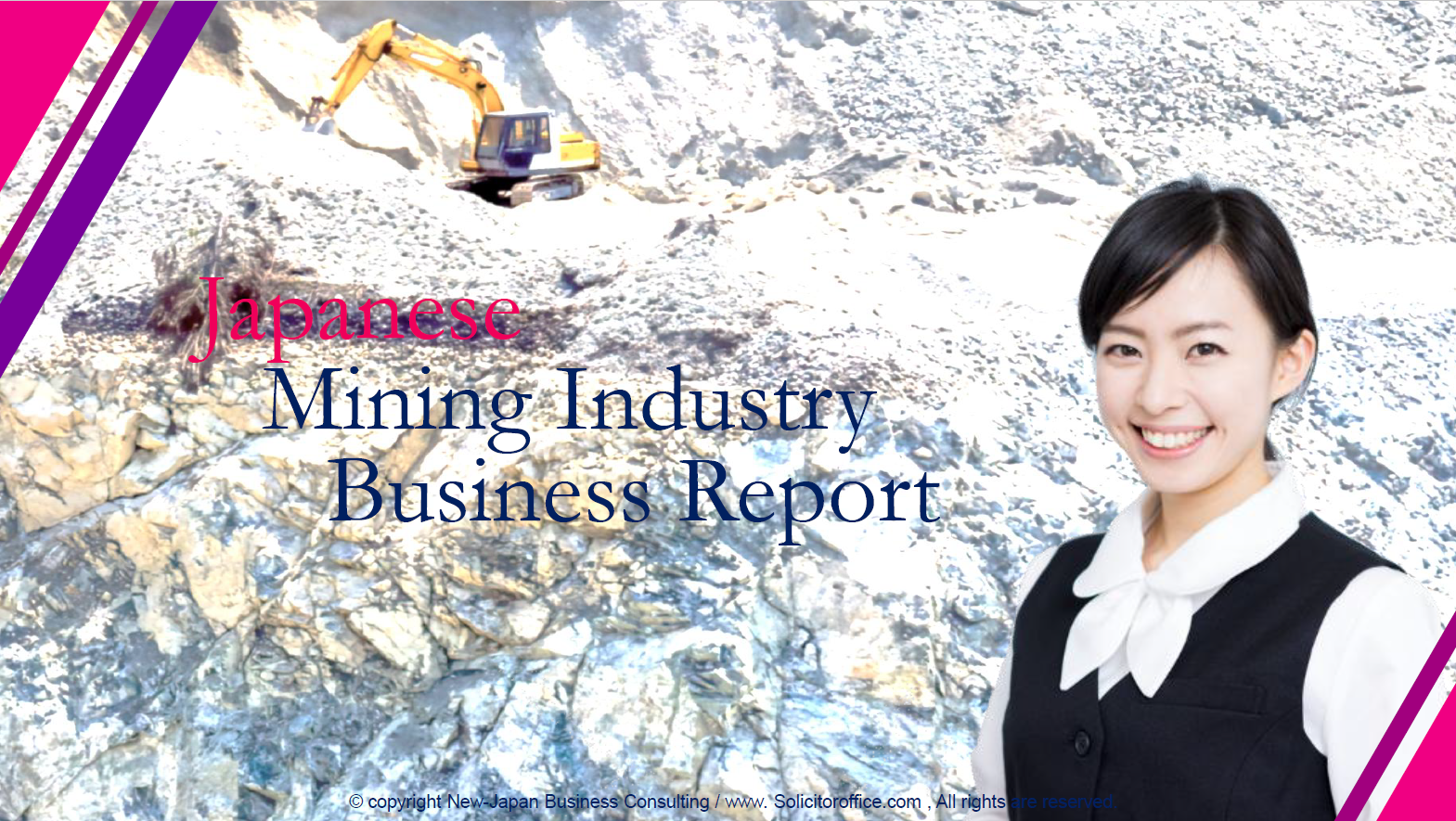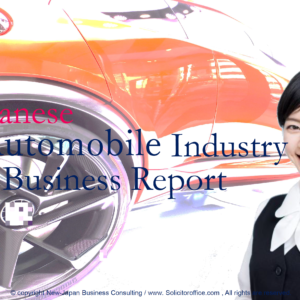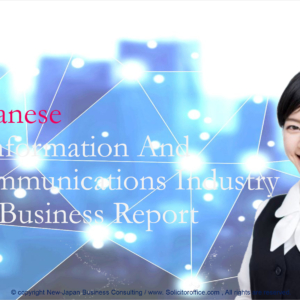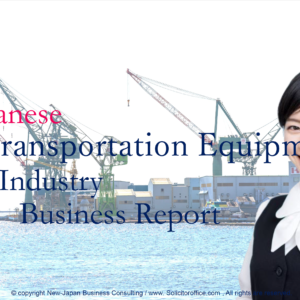説明
Unlock the Future of Japanese Mining: Exclusive Business Intelligence Report
Discover Critical Insights and Untapped Opportunities in Japan’s Evolving Mining Sector
Are you seeking a high-potential, data-driven investment or business opportunity in Japan’s mining sector?
Do you need reliable, strategic intelligence to guide your market entry or expansion efforts?
You’re in the right place.
Our Comprehensive Business Report on the Japanese Mining Industry (2025 Edition) is your ultimate strategic asset — packed with actionable insights, in-depth data, and expert analysis of a sector that’s both historically significant and ripe for innovation.
Whether you’re an investor, trader, market analyst, industrial manufacturer, or government policy advisor, this report delivers the knowledge edge you need to compete and succeed in one of Asia’s most unique and overlooked mining landscapes.
Why Japan’s Mining Sector Deserves Your Attention
While Japan may not immediately spring to mind when thinking of mining powerhouses, that’s exactly why this report matters. Japan’s mining industry is strategically positioned at the crossroads of tradition and transformation. With a history of metal extraction dating back centuries, a growing focus on rare earth elements, and advanced recycling and urban mining capabilities, Japan is quietly rebuilding its position in the global resource value chain.
Key Highlights:
– Critical Minerals & Rare Earths: Amid global supply chain volatility, Japan is intensifying its exploration and processing of rare earth elements and battery-related minerals — from lithium to tungsten.
– Government Support: Aggressive national policies, including METI subsidies and mineral resource development strategies, are reshaping the regulatory and financial landscape.
– Technological Innovation: Home to world-leading robotics, AI, and precision mining technologies, Japan is leveraging its manufacturing prowess to lead the next generation of sustainable mining.
– Urban Mining & Recycling: Japan is the global pioneer in recovering precious metals from electronic waste, transforming cities into above-ground mines.
– Global Collaboration: Japanese mining firms and trading houses are expanding upstream through overseas joint ventures — from Oceania to Africa — with strategic government backing.
What You’ll Get in This Report
Our 153+ page, fully updated 2025 edition offers a granular, insider’s perspective on the Japanese mining sector, combining deep local knowledge with international strategic context.
✅ Key Sections Include:
– Market Overview: Size, segmentation, and value chain of Japan’s domestic mining activities
– Key Commodities: In-depth analysis of coal, copper, gold, zinc, limestone, rare earths, and more
– Urban Mining: The rise of e-waste recycling and Japan’s competitive edge in circular resource economies
– Regulatory Framework: METI policies, environmental laws, and mining rights licensing in Japan
– Investment Landscape: Joint ventures, FDI flows, key corporate players, and strategic projects
– Technology & Innovation: Role of robotics, AI, and automation in modernizing operations
– Future Outlook (2025–2030): Scenarios, trend forecasts, and strategic implications
Each chapter is backed by real data, original research, and expert commentary — offering you not just *what* is happening in Japan’s mining industry, but *why* it matters and *how* to act on it.
Industries covered in this report are represented by the following companies
Nippon Steel Mining Co.
Mitsui Matsushima Holdings
INPEX
Japan Petroleum Exploration Co.
K&O Energy Group Holding company.
#If you would like to purchase reports on these individual companies, please contact us as we can provide custom-made services.
Who This Report is For
– Global Mining Companies seeking expansion opportunities in Japan or JV partners
– Commodity Traders watching price signals and resource trends in Asia
– Institutional Investors & Funds exploring ESG-aligned resource portfolios
– Japanese Corporations evaluating domestic vs. overseas mineral sourcing strategies
– Policy Makers & Economists tracking energy transition and raw material security
– Tech Developers & Startups targeting innovations in mineral recovery and process automation
If your work intersects with strategic resources, energy security, or high-tech manufacturing, this report is a must-have.
Why This Report Stands Out
– Locally Informed, Globally Framed: Created by bilingual industry analysts based in Japan, with extensive sector interviews and ground research.
– Strategic Intelligence: Not just raw data — this report helps you interpret trends, anticipate risks, and identify competitive advantages.
– Instantly Usable: Designed for decision-making — includes charts, SWOT analyses, policy briefs, and company snapshots.
– Regularly Updated: Reflects the most current developments as of Q1 2025, including the latest moves in rare earth exploration and METI strategy shifts.
Table of Contents
Introduction
Understanding The Mining Industry’s Economic Role
Objectives And Scope Of The Report
1. Foundations Of Mining Industry Business Models
1.1 Historical Overview Of Mining Operations And Business Structures
1.2 Core Components Of A Mining Business Model: Resources, Value Chain, And Stakeholders
1.3 Geographical Variations In Mining Industry Practices
2. Historical Background Of The Japanese Mining Industry
2.1 Pre-Edo Period Mining Development
2.2 The Dawn Of The Modern Mining Industry In The Meiji Period
2.3 Changes In The Mining Industry Before And After World War II
2.4 Mining Industry Development During The High-Growth Period
3. Geological Characteristics And Mineral Resources Of Japan
3.1 Geological Features Of The Japanese Islands
3.2 Distribution Of Major Mineral Resources
3.3 Mineral Resource Potential By Region
3.4 Rare Metal Deposits (Rare Metals)
4. Technological Innovation And The Evolution Of The Mining Industry
4.1 Latest Trends In Exploration Technology
4.2 Innovations In Mining Technology
4.3 Environmentally Sustainable Mining Technologies
4.4 Use Of Digital Technologies (AI, IoT, Robotics)
5. The Position Of The Japanese Mining Industry In The Global Market
5.1 Structure Of The Global Mining Market
5.2 Japan’s Dependence On Mineral Imports
5.3 Analysis Of International Competitiveness
5.4 Resource Diplomacy And Strategic Approaches
6. Environmental And Sustainability Challenges.
6.1 Balancing Environmental Protection And Mining
6.2 The Role Of The Mining Industry In A Decarbonised Society
6.3 Recycling Technology And Circular Resource Development
6.4 Biodiversity Considerations
7. Comparative Analysis: Lessons From Other Industries
7.1 Parallels With The Oil And Gas Industry
7.2 Adopting Innovations From Manufacturing And Technology Sectors
7.3 Impacts Of Shared Economy Models On Mining
8. Financial And Investment Perspectives
8.1 Cost Structures And Revenue Models In The Mining Sector
8.2 Risk Management In Volatile Commodity Markets
8.3 Emerging Trends In Mining Finance: From Traditional Loans To Green Bonds
9. Current Status And Prospects For Policy And Regulation
9.1 Changes In Mining Legislation
9.2 National Strategies And Resource Policies
9.3 International Regulatory Developments
9.4 Prospects For Future Legal Frameworks
10. Challenges And Opportunities For The Japanese Mining Industry
10.1 Analysis Of Structural Issues
10.2 Overcoming Technical Barriers
10.3 Potential For New Business Models
10.4 Strategies To Enhance Global Competitiveness
11. Opportunities For Growth And Transformation
11.1 Collaborative Approaches In Mining Ecosystems
11.2 Leveraging Emerging Markets For Growth
11.3 Potential For Cross-Sector Partnerships
12. Conclusion: A Vision For The Future Of The Japanese Mining Industry
12.1 Overall Outlook
12.2 The Importance Of Innovation
12.3 Roadmap For Sustainable Development
13. References.
13.1 Basic Literature
Position Yourself Ahead of the Curve
Japan is a resource-scarce country — yet it has mastered the art of *resource strategy*. In a world increasingly defined by critical minerals, energy transition, and geopolitical uncertainty, understanding Japan’s mining and resource sectors provides more than market insights — it provides *strategic leverage*.
Don’t let the quiet exterior of Japan’s mining sector fool you. Behind the scenes, bold moves are being made, and only those with access to the right intelligence will capitalize.
Purchace the Report Now
Ready to elevate your strategy with authoritative insight?
✅ Instant PDF Access
✅ Editable Excel Data Supplement
✅ Free Update Guarantee for 12 Months
✅ Secure Checkout with Credit Card or PayPal
👉 [Buy Now – Secure Your Copy]
Price: 4,500 USD
Language: English
Format: Digital Download (PDF)
Delivery: Immediate Access Upon Purchase
Don’t wait for the rest of the world to notice Japan’s resource strategy. Be the first to move — and the first to benefit.











